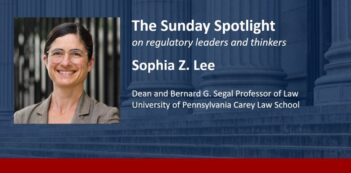
Congress should resist the popular misconceptions of the critics of benefit-cost analysis.
For at least 30 years, U.S. presidents have required federal agencies to use benefit-cost analysis (BCA) when developing new regulations. Members of Congress from both political parties have also favored BCA. Yet despite the strong bipartisan support for a strong role for BCA in federal regulatory policy, critics of BCA object to its role by invoking a series of popular misconceptions. I would like to dispel five of the most popular misconceptions about BCA.
Myth #1: It is not feasible to quantify the benefits of public health, safety or environmental regulations.
Due to thirty years of progress in science, risk assessment, and economics, it is now feasible to produce much better estimates of the benefits of federal health, safety and environmental regulations.
For example, when the federal government first imposed mandatory airbag requirements in 1977, benefit estimates could only be based on laboratory crash tests , limited sources of data, and engineering judgment. Based on decades of real-world experience with the airbag regulation, we now know that the safety benefits are smaller than originally projected – but they are still large enough to justify the investment in airbag technology.
Over time, air pollution regulations of the U.S. Environmental Protection Agency (EPA) have been shown to have higher public health benefits than previously thought due to better understanding of how the rate of premature death rises in a community due to the inhalation of soot and smog. Today, analysts at the EPA perform some of the best work on the benefits of federal regulations.
Myth #2: It is unethical to consider costs when making regulatory decisions about medicine, public health, safety, and environmental protection.
The notion that “safety” is an absolute right, regardless of costs, is indefensible on either philosophical or practical grounds.
Philosophically, complete safety (also called “zero risk”) is an illusion because well-informed citizens choose, on a daily basis, to assume many risks in life in exchange for a variety of benefits. People routinely choose, for example, to reduce travel time by driving faster on four-lane highways than opting for routes along lower-speed, two-lane roads.
When risks are imposed on citizens without their explicit consent (such as when a pedestrian must inhale pollution emitted by a car), the philosophical problem becomes more difficult. But the solution is still not necessarily to mandate zero risk. A more compelling resolution would be to protect citizens from imposed risks to whatever extent the affected citizens themselves would prefer, assuming those affected citizens experienced both the benefits and costs of the regulation.
Philosophically, this is a standard of hypothetical informed consent, and it forms the ethical foundation of BCA. To reject the informed preferences of citizens in favor of absolute safety amounts to a type of authoritarianism – an ill-considered rejection of the ideals of personal freedom and consumer sovereignty at the foundation of democratic capitalism.
The practical problems with a zero-risk approach are even more troublesome. If regulators go so far in the pursuit of “complete” safety that they make families poorer through higher prices for zero-risk products, they can impose more risk from the induced poverty than from the regulated activity. For example, many regulations in the energy sector have the practical effect of raising gasoline prices, which has its own adverse ramifications for low-income households, including on their health. Practical considerations favor some form of benefit-cost determination over blind pursuit of zero risk.
Myth #3: BCA is a mathematical straightjacket that prevents consideration of important qualitative values such as fairness and special concern for the welfare of children.
The falsehood here is the assumption that a benefit-cost determination involves only a numerical comparison, without consideration of values such as fairness or the special needs of children. It is well-accepted among BCA’s practitioners that, while many benefits and costs can be quantified, other valid considerations cannot be. BCA textbooks call for intangible benefits and costs to be disclosed and considered.
For example, suppose that a federal regulation would reduce the rate of lead poisoning among children in poor urban communities. Assume further that the quantified benefits and costs of this regulation are roughly equal. In such a case, a tie-breaking, intangible consideration arguably favors the regulation, namely the notion that the government owes a special duty to low-income children who are less able than middle-class or wealthy adults to protect their own interests. Certainly nothing in BCA prevents analysts and regulators from giving weight to such intangible considerations.
Myth #4: BCA of business regulations is biased against regulation because the costs of regulations are exaggerated and the benefits of regulation are understated.
It is sometimes asserted that BCA systematically exaggerates costs and under-values benefits. The literature now includes several dozen regulations where ex post estimates of benefit and cost have been compared to the estimates made by agency analysts before regulations were issued. While many of these ex ante estimates have been shown to have errors, there is no universal or systematic pattern that BCA exaggerates costs or underestimates benefits.
Myth #5: BCA is so complicated and time consuming that it grinds the regulatory process to a halt.
One often reads that the federal regulatory process has become “ossified” by procedural and judicial requirements and hears concern that adding more BCA requirements or authorizing judicial review of them will only slow down the issuance of necessary regulations.
Based on the available empirical literature, along with my five years of experience at the Office of Management and Budget (OMB), I can confidently say this is a myth. Federal agencies have no difficulty issuing numerous regulations, including highly expensive ones, when there is a political desire to do so. Consider the rapid flow of homeland security rules after the tragic events of 9/11, or the numerous new regulations proposed and finalized by the Obama Administration.
And since most important regulations are already litigated, it is hard to see how adding a statutory requirement for BCA could lead to more ossification or judicial delays.
* * *
The common objections to BCA are simply myths. Congress should resist them and instead build on the longstanding bipartisan support for BCA by adopting and expanding upon, in a statute, the current requirements contained in presidential orders to regulatory agencies.
This opinion essay on The Regulatory Review has been adapted with permission from testimony Dean Graham recently delivered to the House Judiciary Committee’s Subcommittee on Courts, Commercial and Administrative Law. The views expressed here are his own, and do not necessarily represent the views of SPEA or Indiana University.




